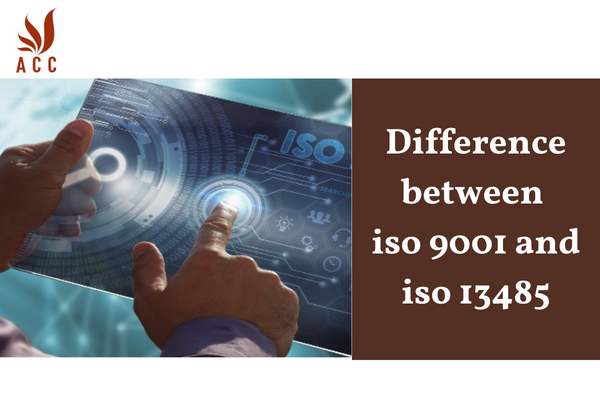ISO 9001 and ISO 13485 are two of the most widely recognized quality management system (QMS) standards in the world. Both standards provide a framework for organizations to improve their quality management processes and ensure that they meet the needs of their customers. However, there are some key differences between the two standards.

Difference between iso 9001 and iso 13485
1. Scope
The main difference between ISO 9001 and ISO 13485 is their scope. ISO 9001 is a generic QMS standard that can be applied to any organization, regardless of its industry or size. ISO 13485, on the other hand, is a specific QMS standard for organizations that design, develop, manufacture, install, or service medical devices.
2. Requirements
ISO 9001 and ISO 13485 share many of the same requirements, such as the need for a quality policy, a management review process, and a process for continual improvement. However, ISO 13485 also includes additional requirements that are specific to medical devices. These requirements address issues such as:
- The safety and effectiveness of medical devices
- The compliance of medical devices with applicable regulations
- The communication of risk information to users
3. Focus
ISO 9001 focuses on the overall quality management of an organization. ISO 13485, on the other hand, focuses on the specific requirements for medical devices. This difference in focus is reflected in the terminology used in the two standards. For example, ISO 9001 refers to "products" and "customers," while ISO 13485 refers to "medical devices" and "users."
4. Benefits
Organizations that implement ISO 9001 or ISO 13485 can expect to achieve a number of benefits, including:
- Improved customer satisfaction
- Increased efficiency and productivity
- Reduced costs
- Enhanced reputation
5. Certification
ISO 9001 and ISO 13485 certification can be obtained from a third-party certification body. Certification demonstrates to customers, suppliers, and other stakeholders that an organization has a well-managed QMS that meets the requirements of the relevant standard.
ISO 9001 and ISO 13485 are both valuable tools that can help organizations improve their quality management. The choice of which standard to implement depends on the specific needs of the organization.
6. Frequently asked questions
Q1 : What is ISO 9001?
A: ISO 9001 is a globally recognized standard that specifies requirements for a quality management system (QMS) in any industry.
Q2 : What is ISO 13485?
A: ISO 13485 is a standard specifically designed for the medical device industry, outlining requirements for a quality management system related to the design, development, production, and servicing of medical devices.
Q3 : How do the scopes of ISO 9001 and ISO 13485 differ?
A: ISO 9001 is applicable to any organization, irrespective of industry, focusing on general quality management principles. ISO 13485, on the other hand, is tailored specifically for the medical device industry.
Q4 : What are the key similarities between ISO 9001 and ISO 13485?
A: Both standards emphasize the importance of a quality management system, customer satisfaction, and continuous improvement. They share common principles such as process approach, risk management, and document control.
Q: How do the documentation requirements differ between ISO 9001 and ISO 13485?
A: ISO 9001 has more flexibility in documentation, allowing organizations to determine the necessary level of documentation. ISO 13485, being more specific to the medical device industry, has more stringent documentation requirements, especially related to product realization processes.
Q5 : Can a company be certified to both ISO 9001 and ISO 13485 simultaneously?
A: Yes, a company can be certified to both ISO 9001 and ISO 13485 simultaneously. This is common for organizations that operate in the medical device industry but also want to demonstrate a commitment to general quality management principles. However, it requires careful planning and integration of the two systems.
Nội dung bài viết:






Bình luận